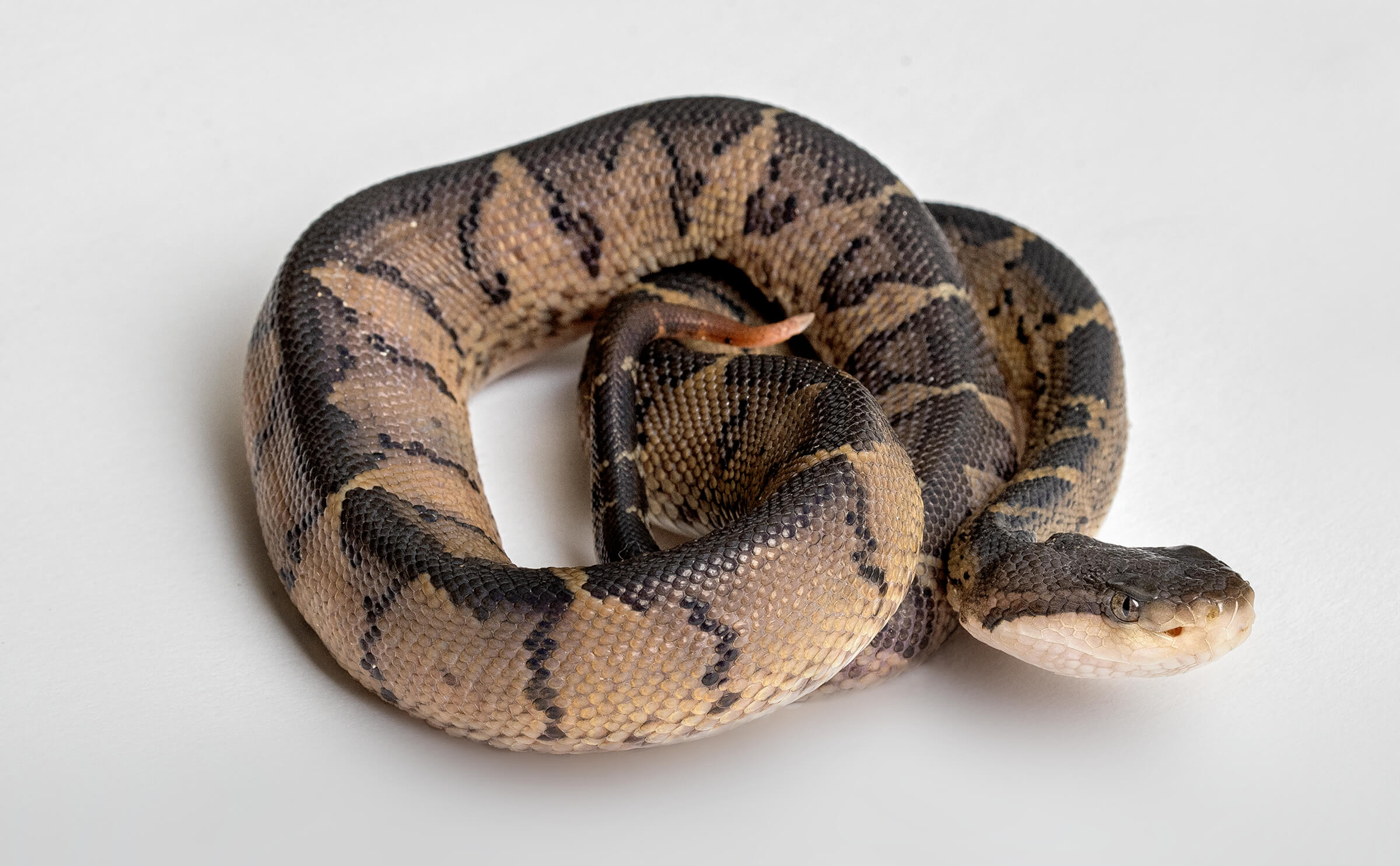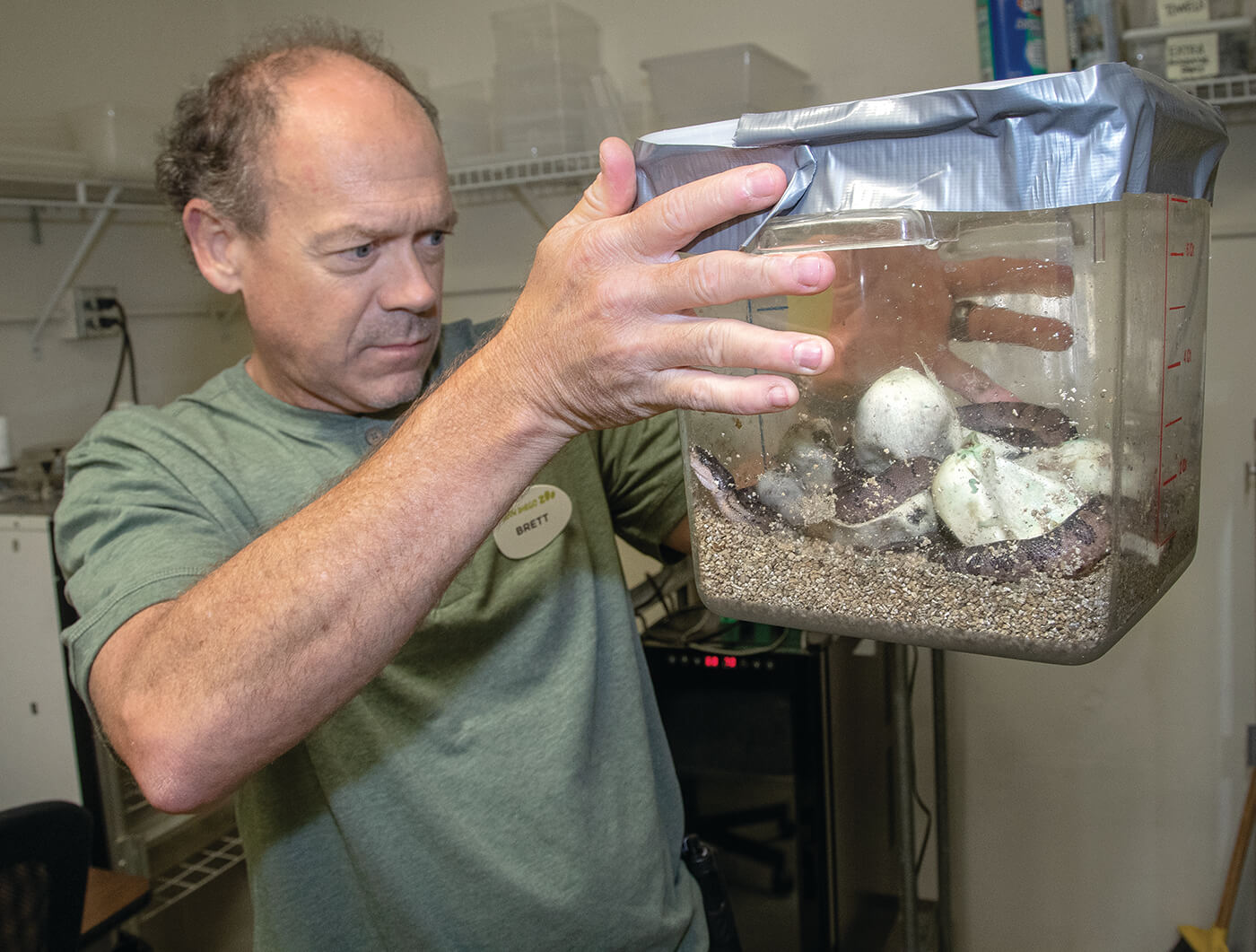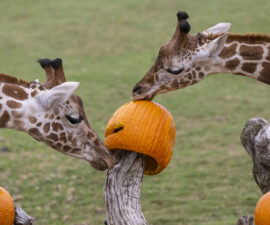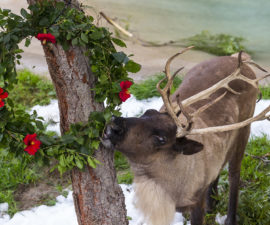BY Donna Parham
Photography by Ken Bohn
In the wet lowland forests of Costa Rica, you might step within inches of one of the largest and most venomous snakes in the Americas—and never know it was there. The rare black-headed bushmaster Lachesis melanocephala is an elusive species that’s seldom encountered in the wild. “Although they are large, these snakes are super secretive,” says Brett Baldwin, associate curator of herpetology and ichthyology at the San Diego Zoo. “You don’t come across them in the wild very often, and not much is known about them.”

SPOT THE SNAKE
Keeper Jonny Carlson examines one of the Zoo’s two adult bushmasters. The largest pit viper in the Americas, a black-headed bushmaster typically spends its days in burrows, or cozied up under exposed tree roots, or a fallen log. Their rain forest habitat is re-created at the Zoo’s Klauber-Shaw Reptile House.
During the day, slowly cruising, black-headed bushmasters are rarely encountered. They are more active at night, but with this species, “active” is a relative term. A snake might leisurely slither to a new spot nearby—or not. A terrestrial ambush predator, it only strikes when its prey (typically a rodent) comes within reach—and only when it’s hungry or feels threatened. Depending on the size of its prey, it may eat only one to three times per month. “They don’t like to give up their hiding spots,” says Brett.
Black-headed bushmasters are rare in managed care. The only two adults in US zoos—a male and a female, both about eight years old—are at the San Diego Zoo. The species had never reproduced at a zoo, so to encourage the pair to breed, the reptile team worked to recreate just the right environment. Senior keeper Jonny Carlson tracked down an archive of weather history for the regions of Costa Rica where the species is found. “I averaged temperatures for various parts of their range, and adjusted the temperature in their enclosure to fluctuate throughout the year to match that average,” he says. “I had to translate rainfall amount to mist.”
Unlike other neotropical pit vipers, which give birth to live young, black-headed bushmasters lay eggs. So, Jonny provided masses of springy moss the female could use for nesting. No eggs. “Then we tried leaf litter,” says Jonny. Still, no eggs. In the end, he cut an opening in a polystyrene foam ice chest, and one morning in May, he was thrilled to find the female guarding a clutch of eggs. To keep the temperature just right for the developing embryos, Jonny carefully relocated the eggs to an incubator.
After a 71-day incubation at 82 degrees Fahrenheit, the clutch resulted in 5 neonates—perfect, miniature versions of their first-time parents. It was the first-ever reproduction of the species in any zoo, and it increases the US zoo total to seven—all here at the San Diego Zoo.
“When they first hatch, their bellies still have some of the yolk sac that sustained them in the egg,” says Jonny. In the wild, “that gives them a month or two before they have to really start to hunt for food.” Now, keepers offer the hatchlings small mice about once a week. As they get older, keepers will be able to determine their sex and document the development of this rare species.







